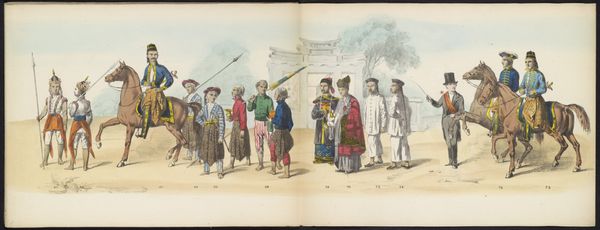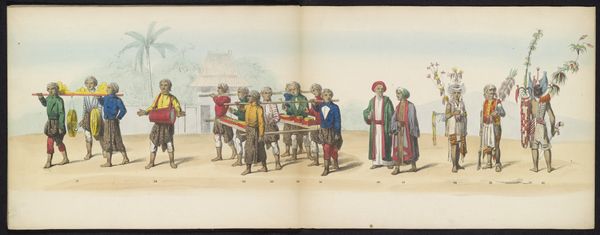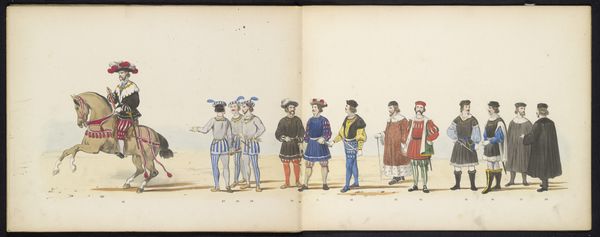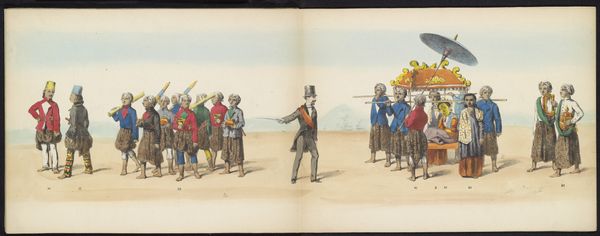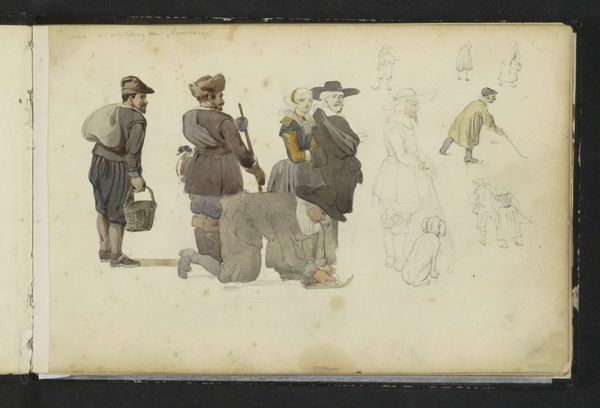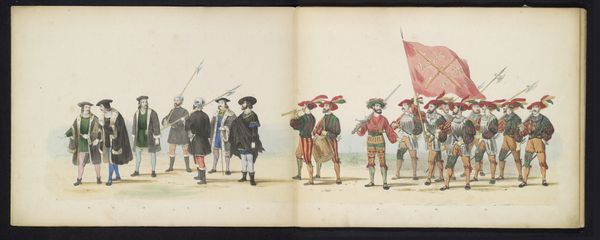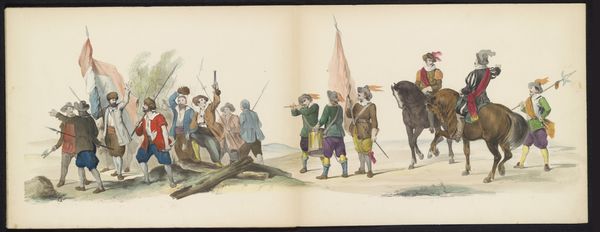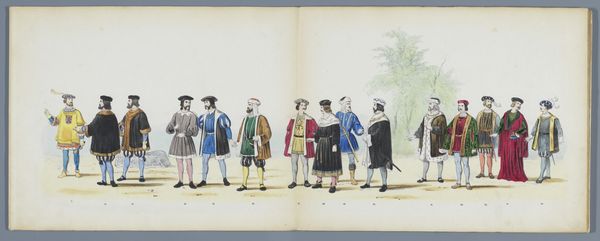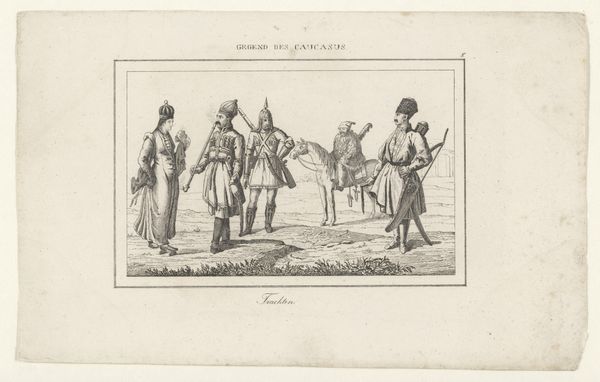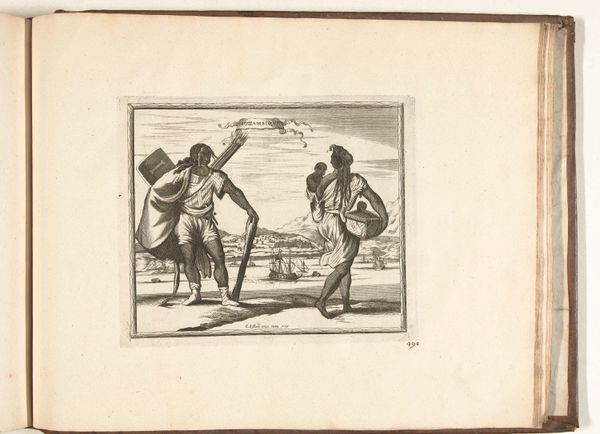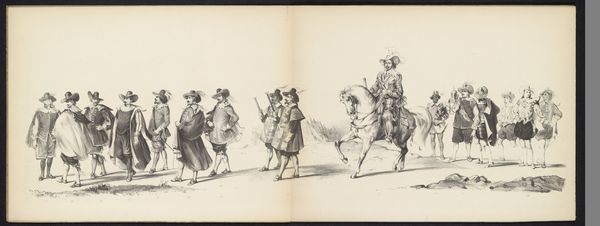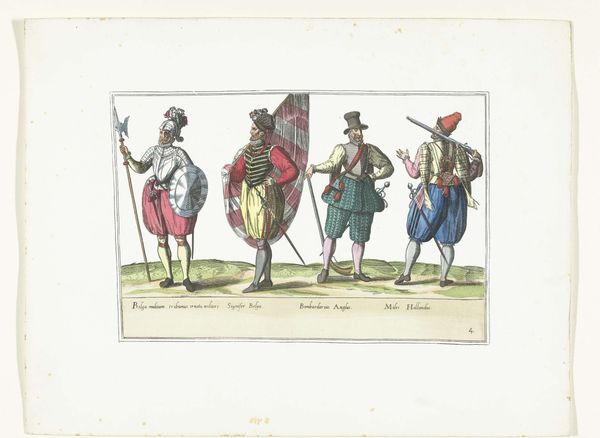
print, watercolor
# print
#
watercolor
#
coloured pencil
#
orientalism
#
watercolour illustration
#
genre-painting
Dimensions: height 270 mm, width 710 mm
Copyright: Rijks Museum: Open Domain
Editor: Here we have "Maskerade van de Delftse studenten, 1857 (plaat 6)" a watercolor print by Johan Hendrik Hoffmeister from 1857. The illustration presents a procession of figures with very staged, performative feel. What do you read in this scene? Curator: The key element for me is the "Maskerade" in the title. It's not merely an illustration of an event, but a *performance*. Given that it depicts Delft students, and was made during a period of intense colonial activity for the Netherlands, the artist prompts to critically reflect on Dutch society's projection of power and "Orientalist" fantasies through public displays, but also what aspects they mock or adopt to boost the Netherlands power during this colonial area. Editor: So it’s like the students were both emulating and possibly satirizing colonial displays of power? Curator: Precisely. Consider the role of students—future administrators, merchants, and possibly colonizers. This "maskerade" is more than just a costume party; it's practice, conditioning. It teaches how to see, interpret, and ultimately, *control* the "Orient." Note the deliberate composition that blends observed, perceived or dreamt realities within its components Editor: Interesting. Are you saying that the artist prompts us to question how social practices can perpetuate skewed perceptions? Curator: Exactly! By showcasing it in a print, the artwork becomes accessible, allowing for critical contemplation, or uncritical acceptation to what the students are doing, which allows for social norms to shift toward either progression or degradation based on the viewer. Editor: It seems so lighthearted at first glance, but there’s so much social commentary layered into it! Curator: That tension between surface and substance is the very essence of effective social critique. This has made me reconsider how Dutch art and social habits relate to that colonial moment in history. Editor: Yes! Now I see the print opening more paths to explore concerning historical and social settings in a unique point of view.
Comments
No comments
Be the first to comment and join the conversation on the ultimate creative platform.
